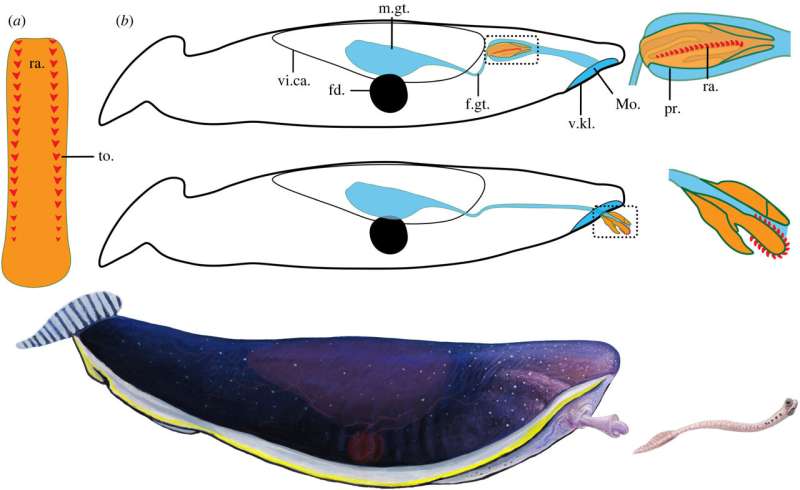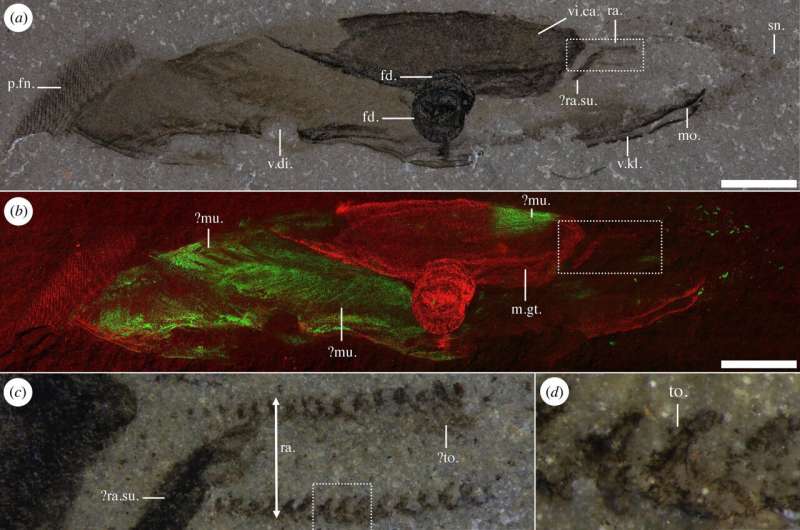September 21, 2022 report
New clue found in 'alien goldfish' suggests it may have been a mollusk

A pair of researchers, one with the University of Cambridge, the other the Royal Ontario Museum, has found a clue that might help place Typhloesus wellsi, nicknamed the "alien goldfish," on the tree of life. In their paper published in the journal Biology Letters, Simon Conway Morris and Jean-Bernard Caron, describe their study of several samples of a 330-million-year-old fossil and what they discovered about the mysterious ancient sea creature.
Since it was first observed back in 1973, T. wellsi has confounded scientists trying to determine its location on the tree of life. Its attributes are so unique that the creature is nearly impossible to classify. When alive it was just 90 mm long and had a somewhat ball-shaped body. It also had no fins other than a single blade-like entity on its tail. It also had no backbone, anus, eyes or shell. Several specimens have been found, one of which had what appeared to be tiny teeth—but that finding turned out to be the remains of a last meal. And that has left the creature an orphan of sorts on the tree of life because no parentage has been identified. In this new effort, the researchers took a close look at a handful of specimens held in the Royal Ontario Museum and found something new.
The researchers found what they describe as a toothy structure in the creature's gut. They describe it as similar to a toothed ribbon with double rows of 20 teeth curved backward. A similar structure is found in modern mollusks, and is called a radula. In T. wellsi, it was situated in the foregut, suggesting that it was pushed out of the mouth into the surrounding water to capture prey, similar, the researchers note, to the way that lizards push out their tongue.

The researchers suggest that T. wellsi was a type of mollusk—they also suggest that when alive, it may have resembled a tiny seal elephant. They acknowledge that their work has not determined its location on the tree of life, but point out that it might help scientists learn more about the evolution of mollusks.
More information: Simon Conway Morris et al, A possible home for a bizarre Carboniferous animal: is Typhloesus a pelagic gastropod?, Biology Letters (2022). DOI: 10.1098/rsbl.2022.0179
Journal information: Biology Letters
© 2022 Science X Network





















